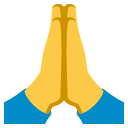There are 2,666 emojis, so don’t be surprised if you don’t know them all. What you may be surprised to find out is that you might be using common emojis in the wrong way!
Of course, a basic understanding of emojis is important beyond your own emoji use—it can play a role in ensuring your kids are using smartphones and social media safely. If you need assistance in monitoring your child’s social media and online activity, try one or all of the five best monitoring apps currently available.
So, find out how many of these commonly used emojis you know the intended meaning of with these ten questions. Then test your children’s knowledge, and see how social media savvy you and your kids are (or are not)! You can read the meaning of each emoji in the answer list below the quiz.
Click on “Answer” to see the correct emoji meaning and learn more.
[toggler title=”Answer” ]Duck Face? Kissy Face. Just like the more commonly used “kissy face,” but without the heart.[/toggler]
[toggler title=”Answer” ]Veins popping in someone who is very angry. It’s used in Manga comics, and is also used to show that a punch has landed.[/toggler]
[toggler title=”Answer” ]Japanese Ogre. Specifically, Namahage, an ogre from Japanese folklore who wards off evil spirits from homes.[/toggler]
[toggler title=”Answer” ]Silence. Don’t have anything nice to say? Don’t say anything at all.[/toggler]
[toggler title=”Answer” ]Sleepy Face. That’s right—the water droplet is a representation of drool, a popular anime/manga iconography that denotes sleep.[/toggler]
[toggler title=”Answer” ]Hushed or someone who is being quiet. Make the “shh” sound, and it might make more sense.[/toggler]
[toggler title=”Answer” ]It is called “I Am a Witness,” and is meant to be used by someone who has observed cyber bullying. Because teens generally have trouble calling each other out, developers felt that this could be a more peaceful substitute.[/toggler]
[toggler title=”Answer” ]Victory hand. Although it’s commonly recognized as the peace sign, the traditional meaning symbolizes a “V” for victory.[/toggler]
[toggler title=”Answer” ]Sign of Respect/Apology. A person bowing deeply which is known as dogeza in Japan.[/toggler]
[toggler title=”Answer” ]Express an apology or gratitude. This is a Japanese representation, but can mean praying in other cultures. Trick question![/toggler]















































